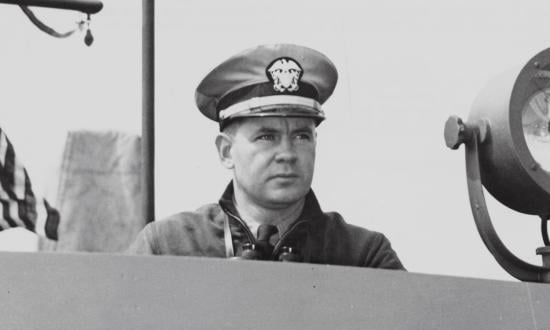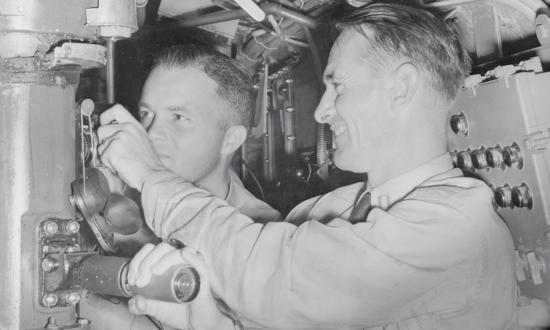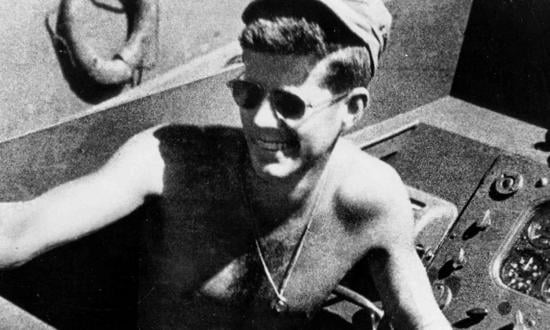By all accounts, “Willy” Williams was a good sailor. Despite having entered the Navy at age 16 using a doctored birth certificate, he learned early on to follow the rules, taking the advice of a seasoned chief petty officer who told him, “If you can’t take orders now, you won’t be respected when you give them later.” From that moment on, “I had the sharpest knife and the shiniest shoes in the Navy,” Williams later recalled.
For the next 19 years, he served in ten different ships, saw action in the Korean War, and advanced to first class petty officer. But despite several tries, he could not pass the advancement exam for chief petty officer. By 1966, he was planning to retire once he hit 20 the following year, hoping to go into law enforcement in his home state of South Carolina. For that final year of service, he volunteered for duty in Vietnam and was assigned to the newly created River Patrol Force, also known as Operation Game Warden, arriving in April 1966.
Working primarily in the Mekong Delta and the Rung Sat Special Zone (also known as the “Forest of Assassins”), the Navy’s newly acquired PBRs (patrol boats, river)—31-foot, fiberglass-hulled patrol craft powered and steered by Jacuzzi jet pumps and armed with various machine guns, grenade launchers, and naval mortars—were tasked with enforcing curfews, interdicting Viet Cong infiltration, preventing taxation of water traffic by the enemy, and countering enemy movement and resupply efforts.
Just two months after reporting on board, while serving as captain of a PBR, Williams encountered an enemy sampan during the early hours of 1 July and gave chase, taking his boat in perilously close to a suspected enemy position ashore. Illuminated and taken under fire at close range, Williams engaged the enemy and, demonstrating impressive tactical seamanship, captured the sampan along with a cache of documents of significant intelligence value. For his “courage under fire, initiative, and seamanship,” he was awarded a Bronze Star with Combat “V.”
Just three weeks later, Williams earned his second Bronze Star in a similar engagement. Recognizing these impressive actions, Williams’ superiors promoted him to patrol officer, placing him in charge of two PBRs, an assignment normally reserved for junior officers or chief petty officers. Williams later described it as “the proudest day of my life,” adding that “it showed the trust the Navy had placed in me” and “gave me the chance to do my job.”
And Williams did indeed do his job!
A month later, when he was serving as patrol officer for PBRs 101 and 105, his patrol came under heavy fire from nearly 100 Viet Cong gun emplacements on both banks of the Mekong River. The citation—this time for a Silver Star—reads: “He courageously directed suppressive fire against the enemy and neutralized a number of the automatic weapons emplacements. Although wounded in the face . . . his aggressiveness and calmness under fire were an inspiration to all in his patrol.”
Halloween proved to be a frightful experience for the enemy when Williams eclipsed his previous achievements by earning the Medal of Honor in one of the most daring engagements of the war. Pursuing an enemy sampan into an extremely narrow waterway, Williams’ two PBRs were flanked by enemy fire from both banks. In a later interview, he was asked what he was thinking as he charged headlong into this perilous situation, and responding in his composed Southern drawl, he said, “Well, there weren’t no exit ramps, so we just kept on a-comin.”
Williams had encountered a formidable force that included many junks and sampans as well as an unusually high concentration of enemy troops. Having survived the gauntlet of fire, he called for Navy Seawolf support and, without waiting for those helo-gunships to arrive, he charged back into the enemy concentration of forces, wreaking considerable havoc. In the three-hour battle that ensued, 65 enemy vessels were destroyed and hundreds of enemy were killed.
In the history of the U.S. Navy, only six sailors had earned the top three awards for combat valor. Just halfway through his tour in Vietnam, Williams had earned two of these—the Medal of Honor and the Silver Star—and in mid-January 1967, he completed the triad by earning a Navy Cross (and his third Purple Heart) while interdicting a major enemy supply movement across the Nam Thon branch of the Mekong River. Under blistering hostile fire, Williams directed his three-boat patrol in heavy combat—resulting in the destruction of nine enemy vessels and seven enemy structures ashore—despite having sustained painful personal injuries.
The week before the engagement resulting in the awarding of the Navy Cross, the Navy dredge Jamaica Bay struck a mine in the Mekong Delta. Dispatched to recover survivors, Williams’ PBR 105 arrived to find the vessel sinking and a man trapped below. Williams dove into the water and, swimming through a hatch, rescued the man, an act of courage that earned him the Navy and Marine Corps Medal, one of two in his storied career.
With another Bronze Star, two Navy Commendation Medals, and a Legion of Merit, as well as a host of lesser awards, Willy Williams was the most decorated enlisted sailor in U.S. Navy history when he retired in April 1967.
He never did pass the CPO exam but was made an honorary chief petty officer after his retirement.
Today, an Arleigh Burke-class destroyer (DDG-95) bears his name: USS James E. Williams.









